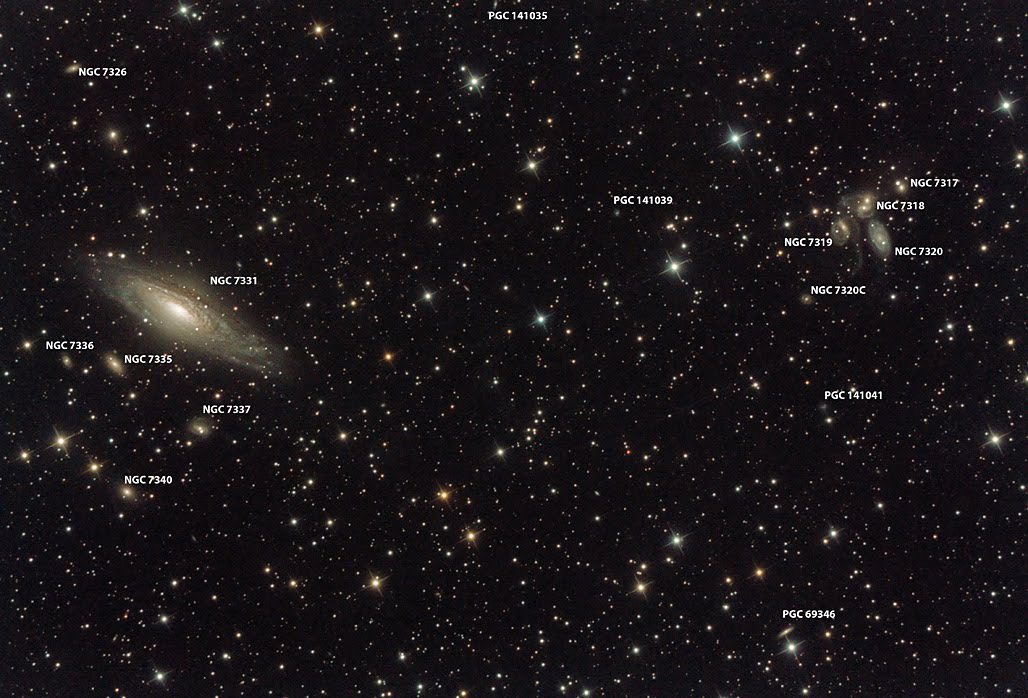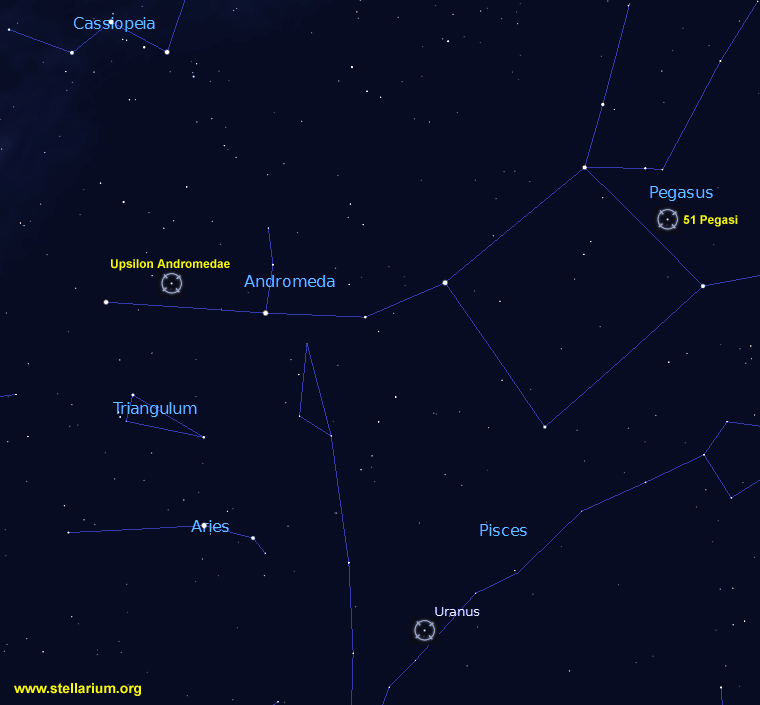Pegasus The Winged Horse
The constellation Pegasus is easily identified by its large square of stars. When rising in the east, it takes on the appearance of a giant baseball diamond. With 1,121 square degrees of sky, Pegasus ranks 7th in overall size. It is also one of the original constellations listed by the astronomer Ptolemy back in the 2nd century.
On our imaginary baseball diamond, the third base star name Alpheratz also called Alpha Andromeda. This is a (B8) subgiant blue star with a surface temperature of 13,000 K or a little more than twice that of the Sun. Located 97 ly away, Alpheratz has a luminosity about 200 times that of the Sun.
Located in these two constellations are a few great targets that should be on your observing list. Towards the northern portion of Pegasus, there is NGC 7331. Known as the Deer Lick Galaxy, this impressive spiral is located 48 million ly from us and shows many areas of young blue star clusters as well as red emission nebulas. This 9.3 X 3.8 arc second galaxy glows at magnitude 9.4.

Located off to the side of this lovely spiral are a few very remote galaxies. NGC 7335, 7336, 7337, 7340 are located 310, 430, 320 and 310 million light-years respectively from us. Move south to the elusive group of galaxies known as Stephan’s Quintet. Ranging from magnitude 13.9 to 16.4, these reside in the range of 290 million ly except NGC 7320 which is a foreground galaxy and not part of the group.
Now move your telescope to the closest galaxy to our Milky Way. The Andromeda Galaxy aka M31 is located 2.5 million ly and can be seen with the unaided eye from dark skies on a moonless night. Alongside the Andromeda are two satellite galaxies, M32 and M110. A telescope will show a few dust lanes of M31 as well as its star cloud. Edwin Hubble imaged the Andromeda galaxy on October 6, 1923. Observing a predictable fading and brightening of the Cepheid variable star known as “V1”, it was determined the Milky Way was not the only galaxy in the universe. The latest measurements have revised the number of galaxies to two trillion in the known universe.
From the first discovery of an exoplanet around a sun-like star back in 1995, thousands of exoplanets have been discovered orbiting distant stars. Two of these parent stars can be seen with the unaided eye. At the time of its historic discovery, 51 Pegasi b was unofficially dubbed Bellerophon and later named Dimidium. It is located 50 ly away from us and orbits the magnitude 5.4 stars in only 102 hours. We can also see the magnitude 4.1 Upsilon Andromeda at 44 ly away that have a family of four planets around it.
Comet 21P/Giacobini-Zinner is now putting on a good show reaches perihelion in early September. It could be as bright as magnitude 7 and pass within 0.39 astronomical units from Earth. The comet will pass the star Capella in Auriga on September 3 and the Cone Nebula on the 24th. This small 2-kilometre wide comet returns every 6.6 years and is the parent comet of the Draconids meteor shower that will peak next month on the 8-9. Only a few meteors are seen per hour but past history has shown an explosion of hundreds per hour has occurred so this is a shower to watch – just in case.

This year’s fall equinox occurs on September 23 and for a few weeks when moonlight is absent will be the best time to see the zodiacal light in the eastern sky before dawn. Here we see sunlit dust particles leftover from the early solar system. It is fairly faint so dark sky conditions are a must. The pillar of faint light stretches on an angle pointing to the upper right from the horizon.
The planet Venus is sinking very close to the western horizon. It is now moving between the Sun and Earth and is showing some beautiful phase structure. On September 1 it sets at 7:54 p.m. Jupiter with its fantastic cloud structure and Galilean moons now set just after 10 p.m. at the beginning of the month and by 8 p.m. by month’s end. Saturn is still located near the Lagoon Nebula in the Milky Way and by 4 a.m. local time. A new moon will occur on Sept 9 with the full Harvest moon on the 26th.
Until next month, clear skies everyone.
